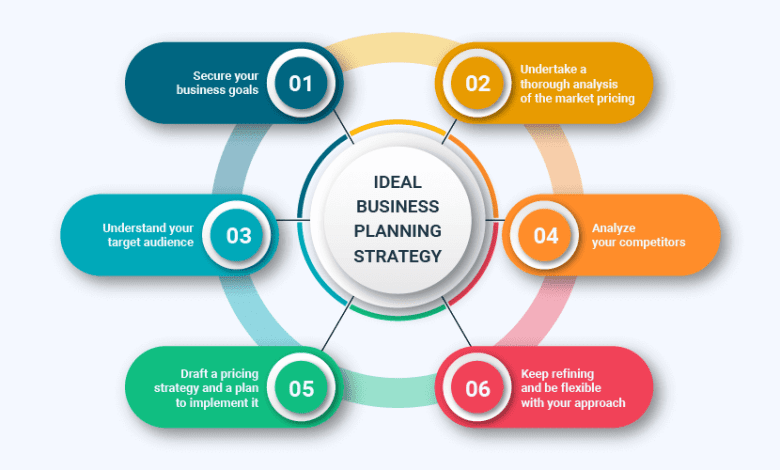How a pricing tool can transform your business strategy

In today’s dynamic business environment, establishing an effective pricing strategy is crucial for maintaining competitiveness and profitability. A robust pricing tool can significantly enhance your ability to set optimal prices, monitor market trends, and respond swiftly to competitive shifts. This article delves into the importance of pricing tools and how they can transform your business operations.
What is a Pricing Tool and Why It Matters
A pricing tool is a sophisticated software solution that goes beyond simple cost-plus pricing or manual analysis. It serves as a bridge between raw data and actionable strategies by consolidating information from various sources and applying complex algorithms to find the optimal pricing points for products or services. Unlike traditional methods, which may rely heavily on manual data entry and generic calculations, a pricing tool harnesses advanced data analytics and artificial intelligence to generate insights that can be pivotal to business growth.
These tools typically draw on historical sales data, current market conditions, customer purchasing patterns, and competitor activity. By processing this diverse array of information, pricing tools provide businesses with recommendations that are not just reactive but proactive. They empower businesses to set prices that align with both the value perceived by customers and the organization’s revenue goals.
How Pricing Tools Transform Business Strategy
When properly implemented, pricing tools can revolutionize a company’s approach to revenue generation. One of their key benefits is the ability to foster dynamic pricing. This feature allows businesses to adjust prices in real-time based on shifting market dynamics, customer segments, and supply chain variations. For example, an e-commerce company can leverage a pricing tool to adjust its prices automatically during a flash sale or a period of high competition, ensuring they remain competitive without sacrificing profit margins.
Another significant aspect is their impact on customer satisfaction and loyalty. Pricing tools can help identify price points that resonate with customers, preventing the potential pitfalls of pricing too high and deterring buyers, or too low and eroding perceived value. They can simulate various pricing scenarios and forecast their impact on sales volume and profit, enabling businesses to choose the strategy that best meets their objectives.
The Broader Business Implications
Beyond the immediate financial benefits, integrating a pricing tool into your business strategy supports a data-driven culture. This culture ensures that decisions are based on real evidence rather than intuition alone, fostering confidence in strategic planning. Additionally, the ability to monitor competitor prices in real-time helps prevent the kind of slow responses that can erode market share. By understanding where they stand relative to their competition, businesses can position themselves more effectively.
Overall, pricing tools are not just an operational enhancement; they are strategic assets. When paired with training and a proactive approach to market trends, these tools offer a comprehensive path to achieving a sustainable competitive advantage. Businesses that leverage them can better navigate price wars, anticipate consumer behavior shifts, and ultimately lead their market segment with smarter, data-backed decisions.
Understanding pricing tools
A pricing tool is a software solution designed to assist businesses in determining the best prices for their products or services. These tools analyze factors, including market demand, competitor pricing, and customer behavior, to recommend optimal pricing strategies. By leveraging data-driven insights, businesses can set prices that maximize revenue while remaining competitive.
The role of competitive pricing software
Competitive pricing software is a subset of pricing tools that focuses on monitoring and analyzing competitors’ pricing strategies. This software provides real-time data on competitors’ prices, promotions, and stock availability, enabling businesses to adjust their pricing strategies accordingly. By staying informed about market trends, companies can make proactive decisions to maintain their market position.
Key features of effective pricing tools
An effective pricing tool should offer several essential features:
Competitor monitoring: The ability to track competitors’ prices and promotions in real-time.
Dynamic pricing: Automated price adjustments based on market conditions and business rules.
Advanced product management: Tools for optimizing product listings and pricing across various channels.
Performance insights: Analytics to assess pricing strategies’ performance and identify improvement areas.
Marketing optimization: Integration with marketing platforms to align pricing strategies with promotional activities.
Benefits of implementing pricing tools
Integrating a pricing tool into your business operations offers numerous advantages:
Increased efficiency: Automating pricing processes reduces manual efforts and minimizes errors.
Enhanced competitiveness: Real-time insights into market trends and competitor pricing enable swift strategic adjustments.
Improved profitability: Data-driven pricing strategies help maximize revenue and profit margins.
Better decision-making: Comprehensive analytics clearly understand market dynamics and customer behavior.
Choosing the right pricing tool for your business
Selecting the appropriate pricing tool depends on your business needs and objectives. Consider the following factors:
Scalability: Ensure the tool can grow with your business and handle an expanding product range.
Integration capabilities: The tool should seamlessly integrate with your existing systems, such as e-commerce platforms and ERP systems.
User-friendliness: A straightforward interface facilitates ease of use and quick adoption by your team.
Customer support: Reliable support services are essential for addressing any issues or questions that may arise.
Implementing pricing tools: best practices
To maximize the benefits of your pricing tool, follow these best practices:
Define clear objectives: Establish specific goals for your pricing strategy, such as increasing market share or improving profit margins.
Train your team: Ensure your staff is adequately trained to use the tool effectively and interpret its insights.
Monitor performance: Regularly assess the impact of your pricing strategies and make necessary adjustments based on data-driven insights.
Stay informed: Keep abreast of market trends and competitor activities to maintain a competitive edge.
Conclusion
Incorporating a pricing tool into your business strategy can enhance efficiency, competitiveness, and profitability. By leveraging the capabilities of competitive pricing software, you can make informed decisions that align with market dynamics and customer expectations. Investing in the right pricing tool is not just about staying competitive; it’s about leading the market with data-driven strategies that drive success.






